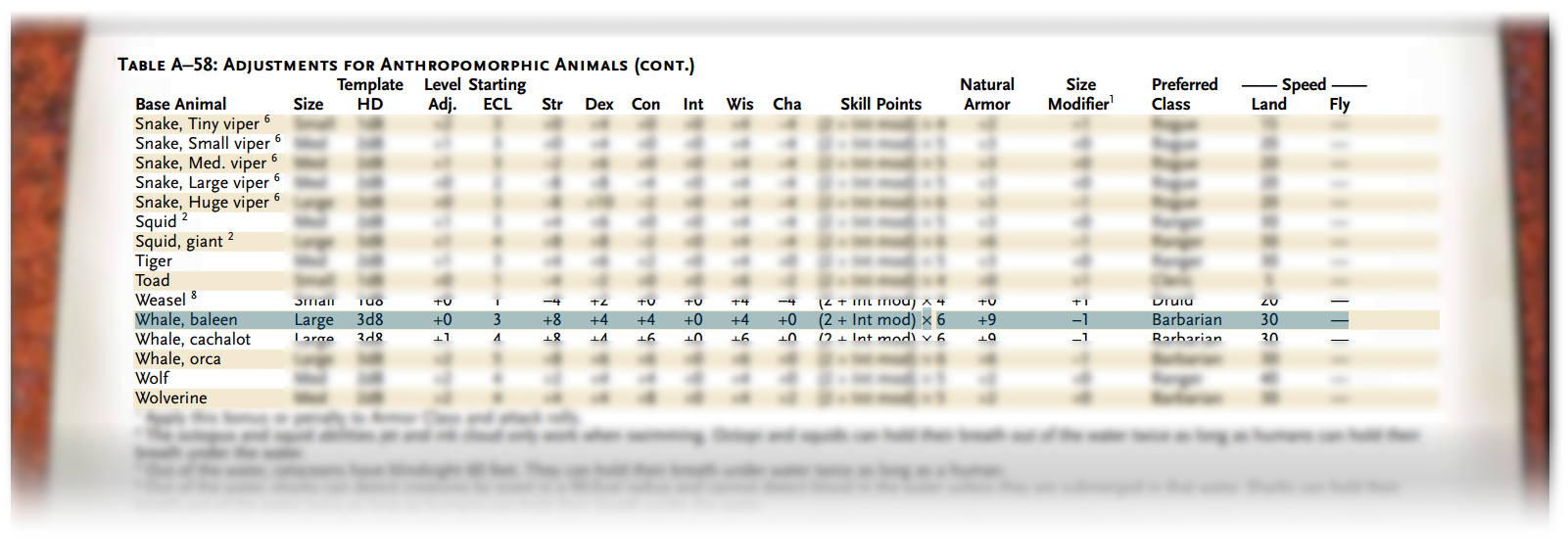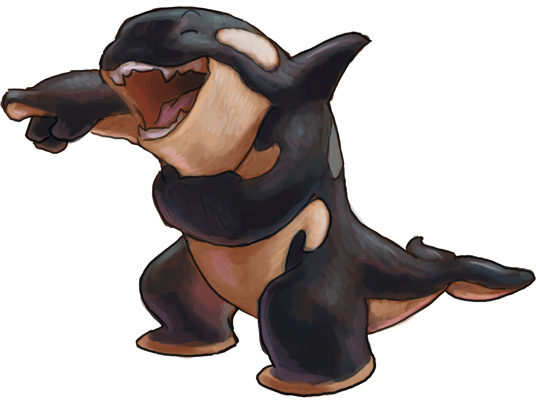We talk a good game about how weird balance was back in Dungeons and Dragons but sometimes it just made a kind of sense. Druids were really good because they could shapeshift into animals and also cast spells. Fighters were bad because they had to stand in one spot and whale on something to get the most of their abilities, and no amount of hit point damage compared to ‘dead on the spot from having your soul ripped out.’
There are however, some odd places that the balance of the game just blind-spotted. It’s a bit of a canard, back in 3rd edition that every book had a broken thing in it, and the more stuff in the book, the more chance you’d find something that slipped up and had more broken stuff in it. Almost every splatbook in 3rd edition featured a class that was busted weak and another that was busted strong, and another that just didn’t work properly. Yet nonetheless, it was in a published book, and that means that it has some reality to it, some unvirtuality that leaves the creative mind of the DM fit to examine the option and decide if it’s okay, or not.
Let me show you something extremely silly and extremely powerful that a reasonable DM might give you a funny look over.
There’s this weird twilight status between 3rd edition and 3.5; things that were printed while 3.5 was being developd had some degree of the mechanical structure of 3.5. Another book that shows this is the Fiend Folio, a monster book printed right at the tail end of 3.0, but before the arrival of 3.5, that nonetheless used stat blocks and information as befit a 3.5 monster. Things in this space get a sort of grandparent clause when they’re graded for balance, yet one particular problem of ‘balance’ is the generally ridiculous Savage Species.
Remember how we said the more stuff a book had, the more likely some of it was to be broken?
Savage Species was extremely silly.
I don’t want to pick through a book that supposedly purported to have some hundred or so new races in it, and new rules for ECL and LA (which as it turns out could be folded together into the much tidier ‘just LA’), and new feats designed to handle monstrous characters, and a host of new templates that were ‘balanced’
One of the things this book purported to do though was to allow a lot of options and one of those options was the anthropomorphic animal template. You could punch any base animal into this, and you’d get out of it, a reasonably balanced playable character race. Most of these were honestly hot garbage because the level adjustment and native hit points worked against whatever your mechanical goals were but hidden amongst them was this little gem.

The Whales are all a bit great but the Baleen Whale is my personal favourite, even though it’s not as cool looking as the Orca (and Orca is what we got for our header image)–
Btw, pro tip: Thanks to furries, searching for a cool/stylish looking anthropomorphic whale will lead to quite a lot of pornography showing up.
— The Baleen Whale gives up 3 levels, meaning the character has to compare to 3 class levels. For any spellcaster, that’s it, total dealbreaker. For a rogue, also pretty rough, as being large and not getting the starting skillpoints of a rogue works against stealth and doesn’t really give them much. Fighters suck and Barbarians are adequate, so those are kind of okay, but the real winner is a monk.
The Monk in 3.5 D&D had to eschew armour of any kind, and in exchange they were given the ability to add their wisdom to their armour class, and got an increasing armour class bonus. The monk was honestly one of the weaker options in 3.5. It beat the fighter mostly because it at least didn’t fold up to mid-level magic, but it wasn’t particularly offensively powerful when you stopped playing in the realm of hit points.
But check out what this Whale Monk can do compared to a human!
At level 5, a human monk has 5d8 hit points; the whale has 5d8 hit points. The whale has an attack bonus of +4, the human of +3. The human can make two attacks, with Flurry of Blows, at +2/+2, while the Whale makes two attacks, with Flurry of Blows, at… +2/+2. The human monk has 2 extra points of base fortitude save, but the whale has an extra point in reflex and will. Finally, the human monk has one extra feat (from being human), Still Mind, Ki Strike (Magic), Slow Fall and Purity of Body, features we can file under ‘nice, but not a big deal.’ And then the wheels come off it in favour of the Whale, because:
- The Whale has 4 extra points of attack and damage, because of 8 points of strength.
- The Whale has 12 points more AC, because of 4 points of Dexterity, 9 points of natural armour, and 4 points of Wisdom (-1 for large)
- The Whale has the same unarmed damage, because they’re large, and will in 2 levels be making attacks that look like greatswords, a full 5 levels before the human monk
- The Whale is large, and has reach, two of the most important things you can imagine for min-maxing a melee combatant back in 3.5
With the kind of changes I made to the fighter and Barbarian, this actually gets way worse because ‘I get close and hit things’ is a much more viable approach in a world with feats like mine, or, god help you, feats like Rokugan’s. Baleen Whale people are terrifying.
Would I allow it? I don’t run 3.5 or 3e any more, but I would allow it because to me, there’s simply nothing a monk can do that actually endangers the play state comparable to a wizard. Monks are amazing for doing things for themselves; they’re mobile and they’re flexible and they can negate a lot of odd threats like falling damage and ranged weapons. It’s broken, sure, but only when you compare it to other classes trying second-tier stuff, like monk and barbarian and rogue. It’ll never outpace a wizard.
Still pretty funny and goofy though. Jawesome!
Image is by Keaze.

1 Trackback